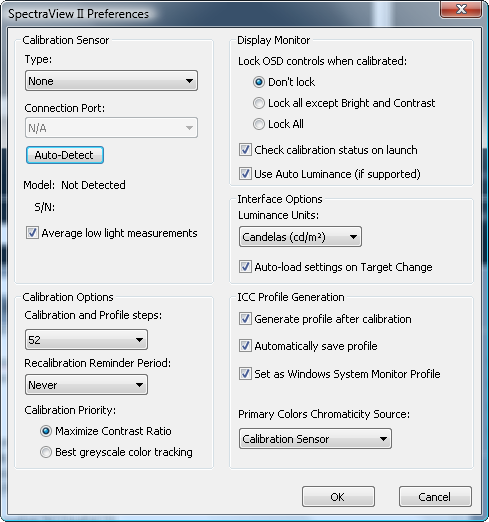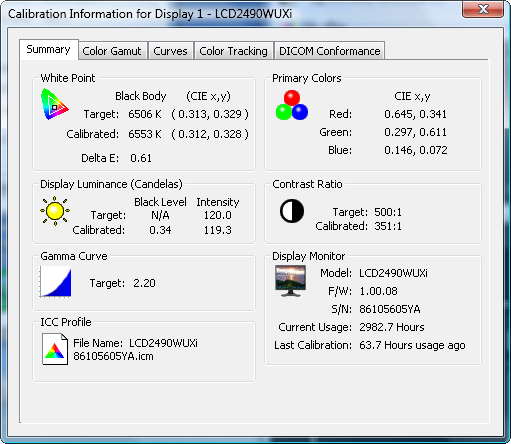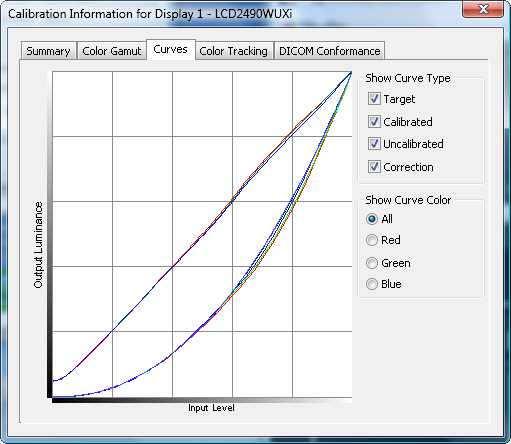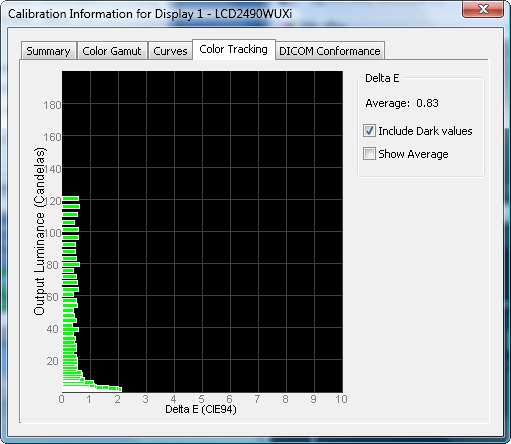Well I finally realized for someone wanting an IPS sRGB monitor, there was practically no choice. You have have to pay the high price for the NEC 2490WUXi. Hopefully we will have turned the corner (to OLED?) when my 4 year warranty expires. The future trend is more TN(but is that a bad thing), more Glossy, and more wide gamut. There is a hefty price for this monitor. Is it worth it?
After three weeks of waiting, this beat up box finally arrives and I proceed to find out:

First the Cons. No monitor is perfect. I'll start with the issues with this one:
Price 3x what a 24 TN would cost. Ouch, but if you have stringent requirements sometimes you have to pay a high price.
Overpowered Back Light. Daytime is not much problem, my computer backs onto a big windows which is a great bias light. But at night a couple of light bulbs are no match for the powerful backlight which has to be tame with additional panel blocking, robbing contrast. This problem is common though, but the NEC at least allows you calibrate in an even blocking curve. I'll go into more detail in the section on calibration.
Input Lag: I am sensitive and I felt it a bit initially on this panel. It is fairly consistent 2 frames(more to follow in lag section). Now that my CRT is unplugged, I don't notice anymore. The Dell 2405 must have been really bad, because it was always noticable to me. This is the biggest con for some hardcore twitch gamers, if this panel had no lag it would be the only panel anyone needs.
Now what makes it great:
Faithful sRGB: (Must Have). I absolutely required standard sRGB. PC color management is a mess. With a faithful sRGB monitor everything is just right. No color shifts between applications. No Disneyland colors. Everything just looks right. A good monitor like good speakers should be neutral. This is as good as it gets. Out of the box it looked great. Unlike most reports of calibration doing wonders. I didn't notice it doing much of anything. It just looks right.
Excellent Viewing angles: ( Another Must Have) I have owned 5 panels now (2 S-PVA, 1 TN, 1 S-IPS and 1 H-IPS A-TW). Nothing I have used or seen in the LCD world compares to the near CRT viewing angle of this panel. From any reasonable user position, it pretty much equals a CRT in delivering a solid image stage. It doesn't vertical shift like TN, horizontal shift like VA or white bloom like an unfiltered LCDs. I can't stress enough how great this is. Finally a completely stable image, that doesn't change with every head movement, image detail that is stable and consistent all over the screen. This is as good as it gets.
Screen coating and Text Quality: NEC delivers the best IPS AR screen I have seen. Not nearly as dusty looking as the Dell 3007-HC I had for a short while. The equal of any matte screen I have seen. Text quality is excellent. Pixels are sharp clear and well defined with no fringing unless you turn on cleartype. Examples cleartype on and off.


Control/calibration: Wow, there is nothing that comes close that I have seen. I have never been a big fan of graphics card calibration. You only get 256 color levels. The more calibration and adjustment, the more of that range you lose, but calibration/profiles have mix of responses depending on the application you use. The NEC 90 series has the solution. 12 bit internal LUT calibration done in the monitor (I have the SV package) and consistent across all applications games and even operating systems. Brilliant! Not only that but you can keep different calibrations on tap. If some application needs its own, it is a button press away. Again, this is as good as it gets.
To sum up, Best available neutral sRGB, Best available viewing angles, Best available control/calibration, excellent AR coating. So is it worth the price? Well something a little unexpected occurred during comparisons, that is leading me to say, Hmmmm.
I will follow up with pics/measurements and a blasphemous comparison...
After three weeks of waiting, this beat up box finally arrives and I proceed to find out:

First the Cons. No monitor is perfect. I'll start with the issues with this one:
Price 3x what a 24 TN would cost. Ouch, but if you have stringent requirements sometimes you have to pay a high price.
Overpowered Back Light. Daytime is not much problem, my computer backs onto a big windows which is a great bias light. But at night a couple of light bulbs are no match for the powerful backlight which has to be tame with additional panel blocking, robbing contrast. This problem is common though, but the NEC at least allows you calibrate in an even blocking curve. I'll go into more detail in the section on calibration.
Input Lag: I am sensitive and I felt it a bit initially on this panel. It is fairly consistent 2 frames(more to follow in lag section). Now that my CRT is unplugged, I don't notice anymore. The Dell 2405 must have been really bad, because it was always noticable to me. This is the biggest con for some hardcore twitch gamers, if this panel had no lag it would be the only panel anyone needs.
Now what makes it great:
Faithful sRGB: (Must Have). I absolutely required standard sRGB. PC color management is a mess. With a faithful sRGB monitor everything is just right. No color shifts between applications. No Disneyland colors. Everything just looks right. A good monitor like good speakers should be neutral. This is as good as it gets. Out of the box it looked great. Unlike most reports of calibration doing wonders. I didn't notice it doing much of anything. It just looks right.
Excellent Viewing angles: ( Another Must Have) I have owned 5 panels now (2 S-PVA, 1 TN, 1 S-IPS and 1 H-IPS A-TW). Nothing I have used or seen in the LCD world compares to the near CRT viewing angle of this panel. From any reasonable user position, it pretty much equals a CRT in delivering a solid image stage. It doesn't vertical shift like TN, horizontal shift like VA or white bloom like an unfiltered LCDs. I can't stress enough how great this is. Finally a completely stable image, that doesn't change with every head movement, image detail that is stable and consistent all over the screen. This is as good as it gets.
Screen coating and Text Quality: NEC delivers the best IPS AR screen I have seen. Not nearly as dusty looking as the Dell 3007-HC I had for a short while. The equal of any matte screen I have seen. Text quality is excellent. Pixels are sharp clear and well defined with no fringing unless you turn on cleartype. Examples cleartype on and off.


Control/calibration: Wow, there is nothing that comes close that I have seen. I have never been a big fan of graphics card calibration. You only get 256 color levels. The more calibration and adjustment, the more of that range you lose, but calibration/profiles have mix of responses depending on the application you use. The NEC 90 series has the solution. 12 bit internal LUT calibration done in the monitor (I have the SV package) and consistent across all applications games and even operating systems. Brilliant! Not only that but you can keep different calibrations on tap. If some application needs its own, it is a button press away. Again, this is as good as it gets.
To sum up, Best available neutral sRGB, Best available viewing angles, Best available control/calibration, excellent AR coating. So is it worth the price? Well something a little unexpected occurred during comparisons, that is leading me to say, Hmmmm.
I will follow up with pics/measurements and a blasphemous comparison...
![[H]ard|Forum](/styles/hardforum/xenforo/logo_dark.png)
















